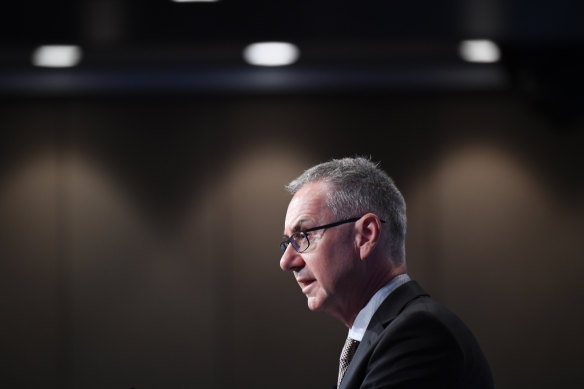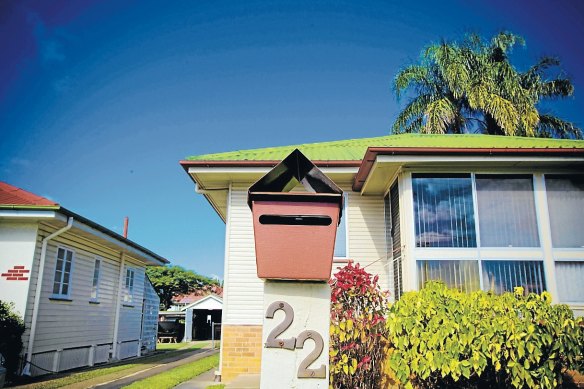Borrower stress reaches levels not seen since GFC

There is a lot riding on the outcome of the Reserve Bank decision on rates next week. Already more than one-quarter of those with a home loan are at risk of mortgage stress, and this number will rise to almost one-third if April yields another rise.
Five days out from this crucial decision, the result remains a coin toss. On Thursday, Commonwealth Bank moved into the camp predicting a rate pause on Tuesday, while National Australia Bank reaffirmed its view of a 25 basis point rise.
APRA chair john Lonsdale says banks have passed the stress test.
Not since the wake of the global financial crisis in 2011 have borrowers been subjected to this level of mortgage stress.
This translates to more than 1.2 million borrowers already feeling under the financial pump while another 223,000 will join them in April if the RBA adheres to its inflation-busting mantra and pushes through another raise.
These figures are not showing up meaningfully in the bank’s 90-day arrears mortgage numbers as most borrowers are managing to pay their monthly interest instalments. The historically low unemployment rate is the primary – if not the only – thing warding off a significant surge in soured loans.
But some of those financially stressed customers will ultimately translate into troubled loans and become a problem for the banks – not just their customers.
Not since the wake of the global financial crisis in 2011 have borrowers been subjected to this level of mortgage stress.
Roy Morgan, who researched mortgage stress, defines loans at risk for stress if the mortgagor is paying between 25 per cent and 45 per cent of their net wage in interest. Those paying more are considered at extreme risk.
Australia’s 30-plus days mortgage arrears rose by 11 basis points to 0.82 per cent in fourth quarter of 2022, from the lowest levels since 2002, which may indicate that borrowers are beginning to face pressure due to inflation and rising interest rates, according to Fitch Ratings.
And it expects arrears to rise further in 2023 in response to the continued tightening of monetary policy.
The major banks will be ruling off their books at the end of March for the first half of their financial year and investors will be carefully watching for signs of deterioration in their mortgage loan books.
That said, most home borrowers are not yet paying the full rate increases already imposed thanks to a lag between the RBA’s rate rises and when the customer is hit. This can take months.
There are also many borrowers who are on low fixed rates that won’t roll off until later this year.
This is the mortgage cliff that many believe the banks will face in the second half of this calendar year.
Slower loan growth has left the major banks competing hard to retain and attract customers – but the fiercest battles are for the low-risk customers who borrow a smaller portion of the value of their property and put in more of their own equity.
Many home borrowers are on low fixed rates that won’t roll off until later this year.Credit:Glenn Hunt
But how vulnerable are Australian banks to a deterioration in credit quality or to any contagion from international banking wobbles emerging over the past couple of weeks?
This was comprehensively addressed by the financial regulator, the Australian Prudential Regulation Authority’s chair, John Lonsdale, who this week made public the results of a theoretical stress testing exercise.
Lonsdale said: “The scenario we presented was based around a deep and prolonged global economic downturn with rising interest rates and prolonged inflationary pressures exacerbated by energy supply shocks.”
The scenario had the Reserve Bank lifting the official cash rate by more than 400 basis points to 4.5 per cent.
(This isn’t too far from the reality given the 350 basis point increase in Australia over the past 10 months.)
Under the APRA scenario, GDP fell 4 per cent as the economy fell into recession. Unemployment rose to 11 per cent and house prices fell nationally by 43 per cent over three years. That led to downgrades in sovereign and bank debt ratings, a temporary closure of offshore funding markets, a sell-off in the Australian dollar and a widening in credit spreads. And to really stress the scenario, we added a twist: each bank had to presume it had fallen victim to a major and costly cyberattack.
APRA even assumed that the banks did nothing to mitigate these effects.
“Under the scenario, all [10 largest banks] incurred significant credit losses as borrowers missed repayments and many fell into negative equity,” Lonsdale said.
“Bank profits fell sharply resulting in dividends drying up for investors. Despite this, the banks in aggregate remained above minimum capital requirements. The funding and liquidity positions of the industry also stood up and that means deposits remained safe in the system.”
While it’s comforting that Australia’s bank infrastructure is resilient to shocks, the same sturdiness may not apply to borrowers.
The Business Briefing newsletter delivers major stories, exclusive coverage and expert opinion. Sign up to get it every weekday morning.
Most Viewed in Business
From our partners
Source: Read Full Article


